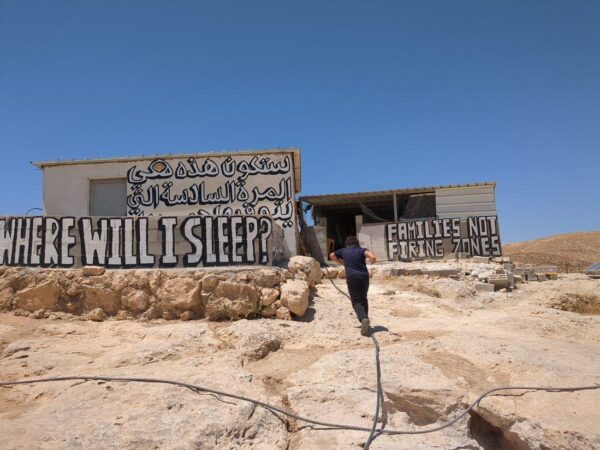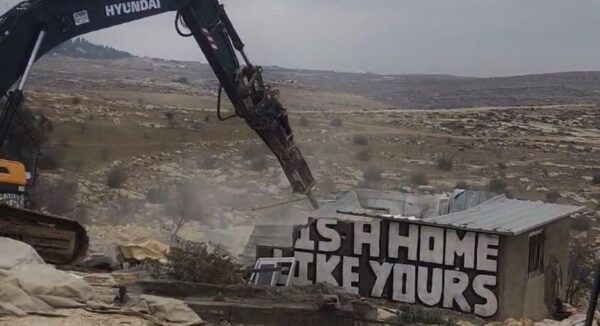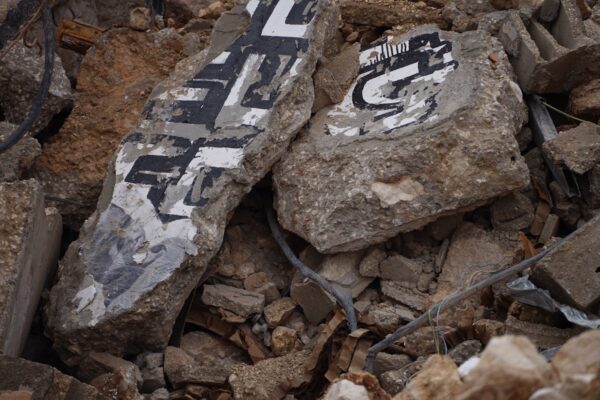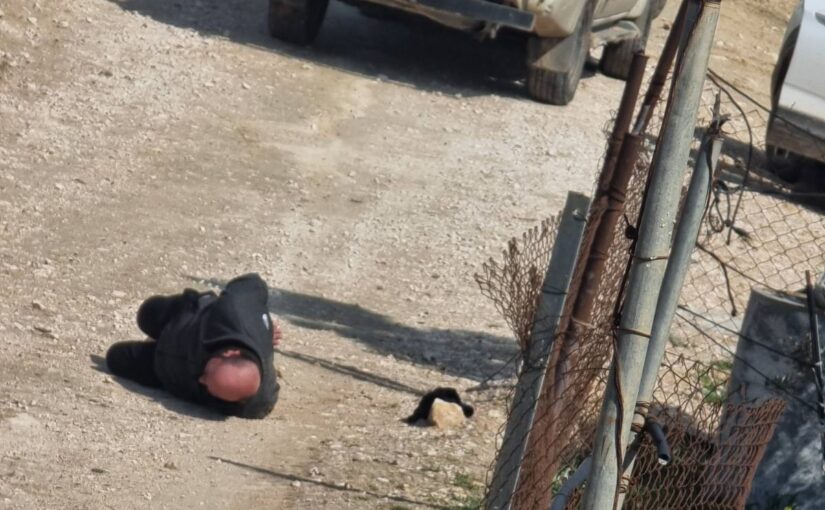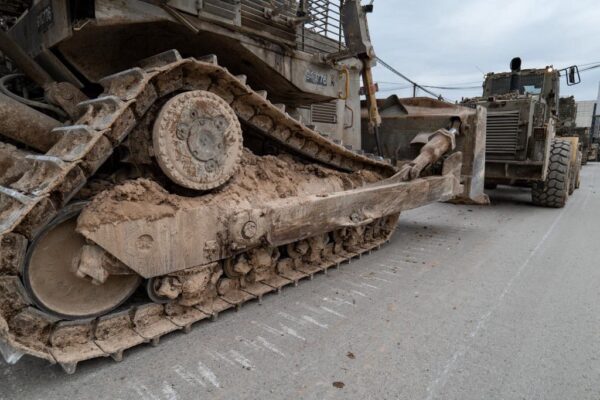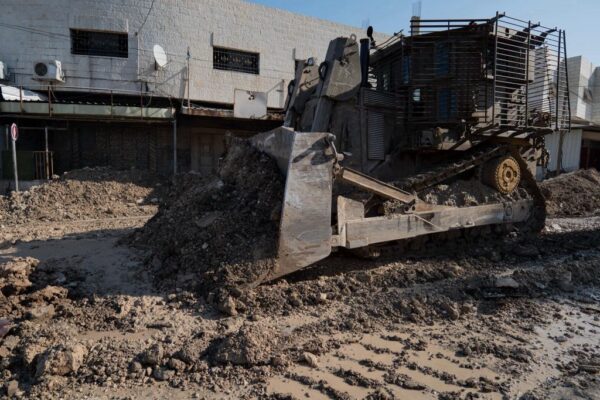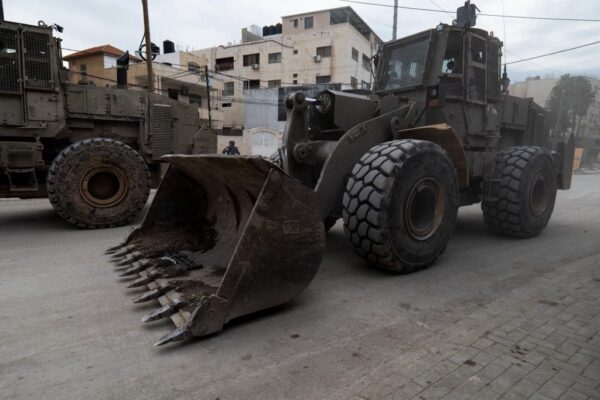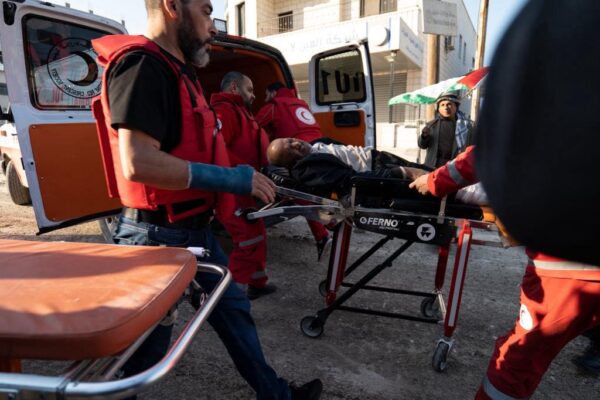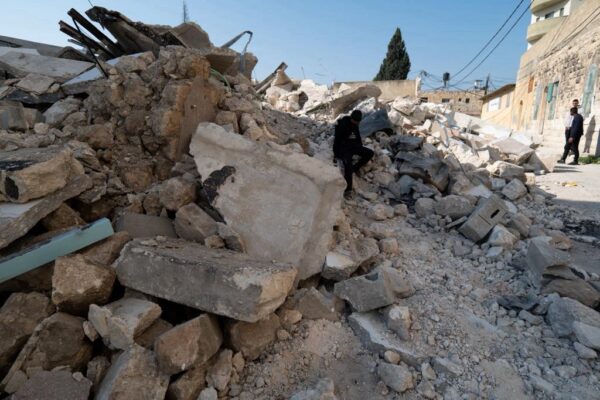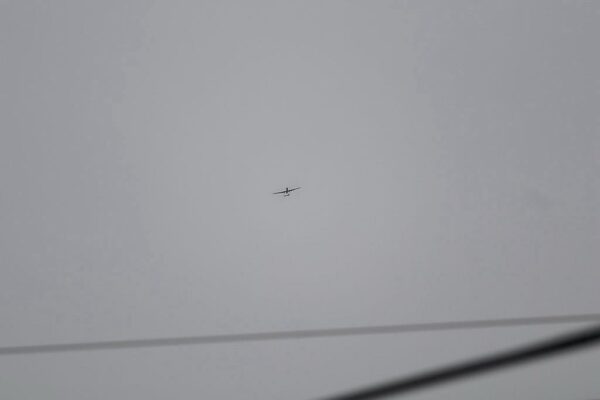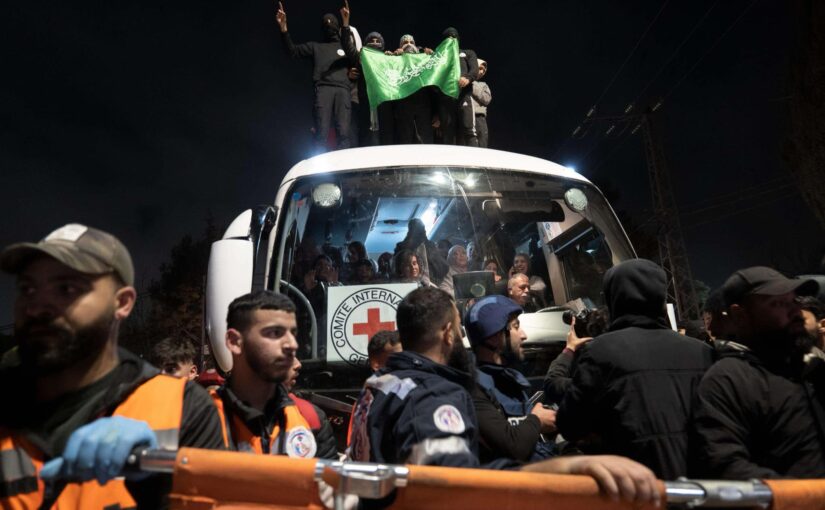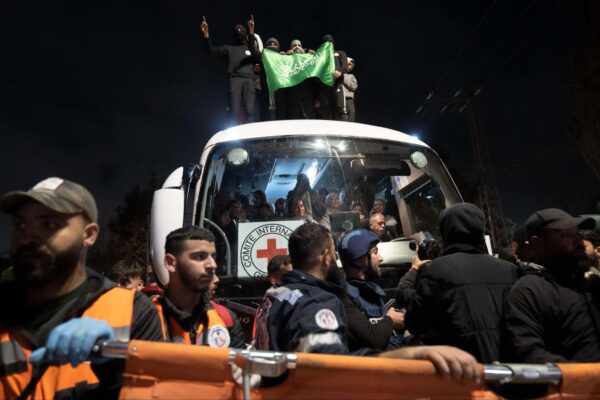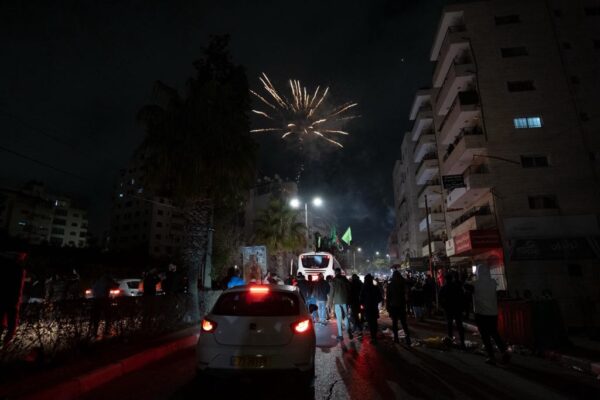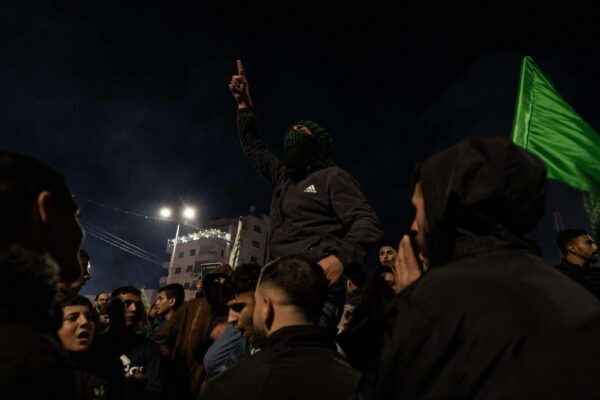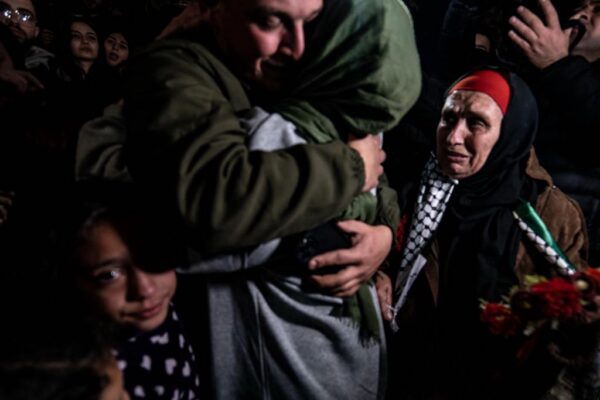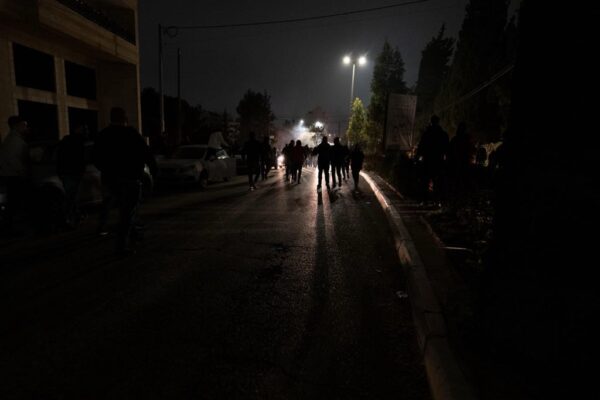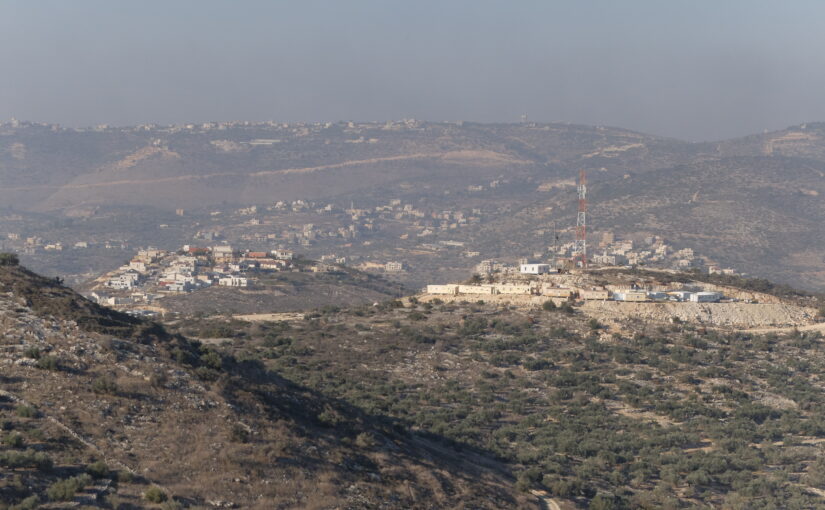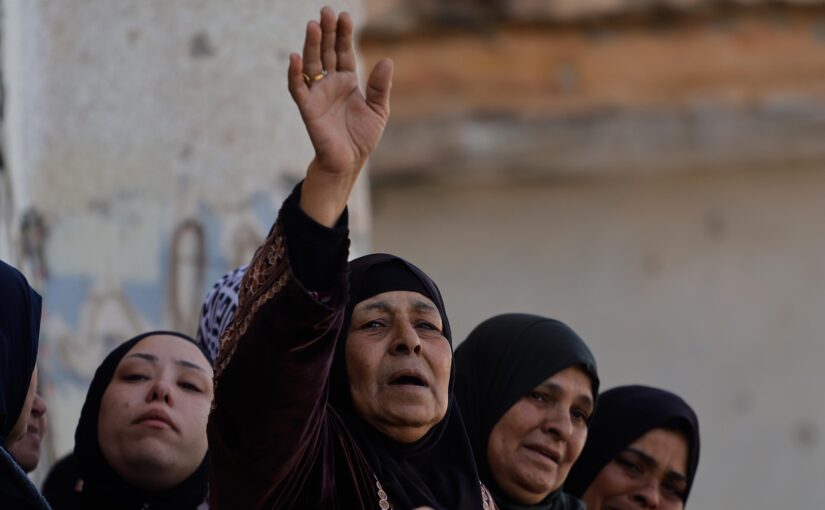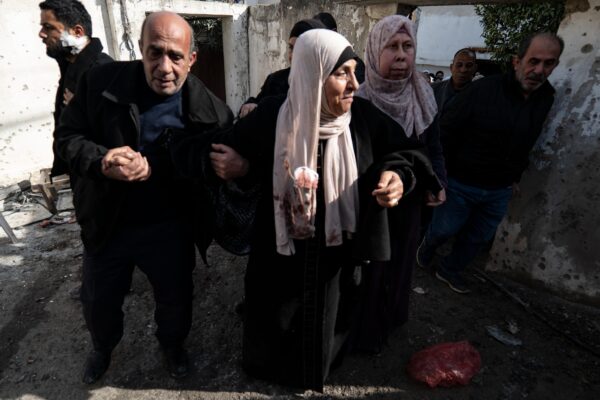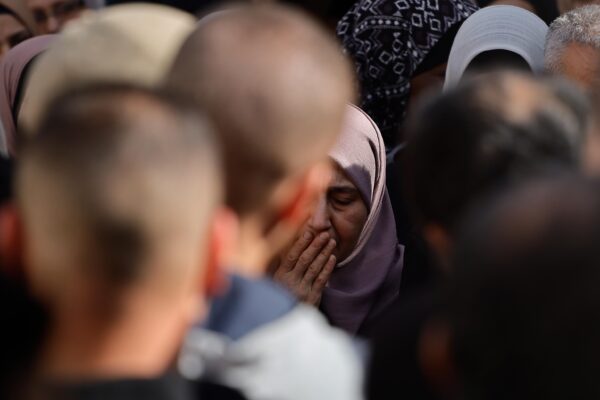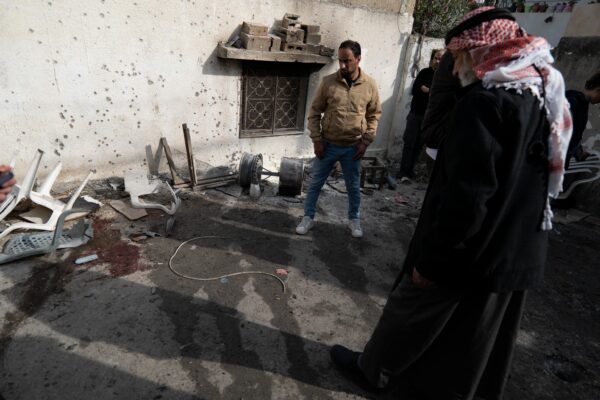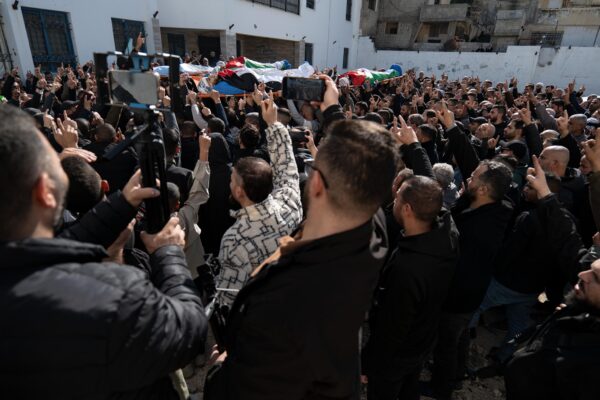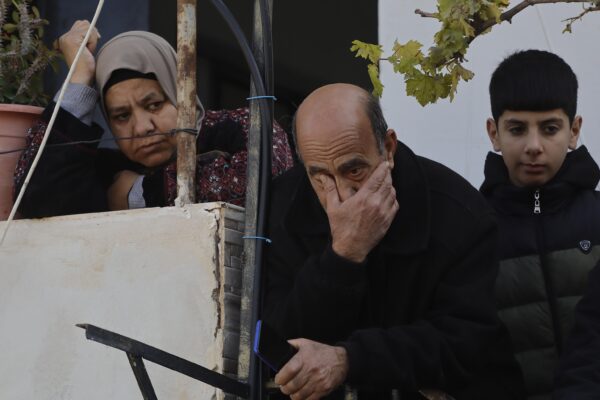March 8, 2025, Masafer Yatta – Alex Chabbott (44), a California based US citizen and solidarity activist, was arrested yesterday from Khalet Al-Daba’, in Masafer Yatta, the southern part of the occupied West Bank, and is now under imminent threat of deportation. Masafer Yatta is the setting of Oscar-winning documentary “No Other Land”, yet despite this global recognition, Israeli authorities continue their efforts to ethnically cleanse its indigenous population and expel whoever stands in solidarity with them.
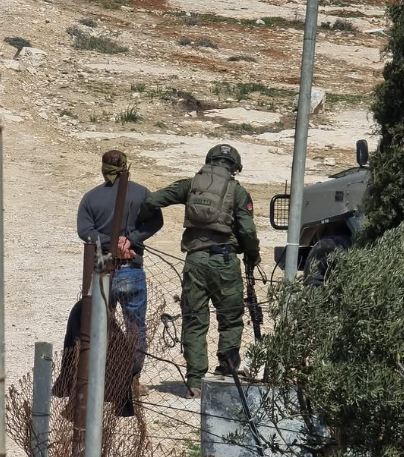
On the morning of March 8, Israeli settlers arrived with guns and started harassing residents of Khalet Al-Daba’, roaming through the village, invading houses and severely beating Palestinians with clubs. Israeli soldiers and police came to aid the settlers, continuing to abuse the Palestinians. After being attacked, three Palestinians and international activists present were arrested and taken to Kiryat Arba police station.
Alex was questioned on trumped-up suspicions of obstructing a civil servant in a previous incident, which he denies, as well as entering a military firing zone the day of the arrest. Israeli authorities detained him as soon as he arrived in the village, only later explaining it is a closed area. While the others detained together with Alex were released, with one Palestinian requiring medical care at the hospital, the police decided to extend Alex’s arrest. However, due to the lack of any real evidence, Israeli authorities decided not to pursue criminal charges and used the perfectly legal small fruit knife he had in his backpack from earlier in the day as an excuse to single him out for deportation. This is not the first time Israeli authorities use baseless suspicions to arrest and deport solidarity activists.
Over the last few weeks, the village of Khalet Al-Daba’ has been terrorized by occupation forces that rolled in with a convoy of bulldozers and military vehicles, expelled families into the early morning cold and destroyed homes and infrastructure. On February 10, Israeli forces demolished 7 houses, 3 caves and a water cistern. Two weeks later, on February 26, bulldozers returned to Khalet Al-Daba’ to destroy six tents put up as temporary homes to replace the destroyed houses. Some of the families’ homes have been destroyed up to five times in recent years.
In the 1980s, Israeli authorities designated a part of Masafer Yatta as ‘Firing Zone 918’, a close military zone. Since this declaration, residents have been at continuous risk of forced eviction, house demolitions, and forcible transfer. Since October 7, Palestinians have faced escalating settler violence, aided and supported by the Israeli army and police, aiming at accelerating the ethnic cleansing of the area. In the last months, and years, villages have seen weekly demolitions and daily settlers attack towards residents, property and basic infrastructure.
Last July, around 200 settlers launched a coordinated attack in which they destroyed vehicles, burned fruit trees and beat up residents in Khalet Al-Daba’ and Mufagarah. In the past year and half, at least 19 Palestinian communities in the occupied West Bank have been forcefully displaced and wiped off the map by Israeli settlers, with the support of the Israeli occupation forces.
Alex was witnessing yet another of these attacks on Khalet Al-Daba’ when Israeli forces arrested him and Palestinian residents. For over two decades, he has been a deeply entrenched activist and community organizer, dedicating himself in struggles to protect the environment and defend land against resource extraction, to show up for indigenous solidarity efforts, to support mutual aid efforts and community resilience, disaster relief, the anti war movement, fights for racial justice, and many more. He has been an active advocate and supporter of Palestine since the early 2000’s when he first learned what was going on. He has worked in land defense and stewardship, and grows a vast garden of food, flowers, and medicinal herbs mostly to give away and share with others. He especially loves to tend to his fruit trees.
“Growing up I learned about the Jewish Holocaust and it was mind boggling that honest people stood by as it happened. Today, Israel is perpetuating a genocide in Gaza, and I don’t want to look back and regret not standing up for what’s right. No one is free when others are oppressed,” Alex wrote.
This all happens under the watch of western countries, as the International Court of Justice (ICJ) has ruled that Israel’s occupation of the Palestinian territories is illegal and must be dismantled, and the International Criminal Court (ICC) issued arrest warrants for the current Israeli prime minister and the previous Israeli defence minister for war crimes. It is to be expected that in the context of the criminal enterprise of the colonisation of Palestine, indigenous Palestinians on their land and human rights defenders who support them, are criminalised.
Palestinians everywhere are facing a genocide and while those in Gaza have endured constant bombardment, West Bank camps are being destroyed in the biggest escalation since the second intifada and communities are facing relentless raids. In this climate, notorious Israeli Minister Itamar Ben Gvir created a special task force to get rid of activists in the West Bank. According to Ben Gvir, the task force was created as a response to some states, including the U.S., sanctioning violent settlers, because international activists were reporting settler violence that they witnessed to their governments. This effort aims to isolate Palestinians from international solidarity, and is part of the ongoing barrage of harassment by Israeli settlers and soldiers towards Palestinians and of human rights activists in the area.
Contact info: palreports@gmail.com
